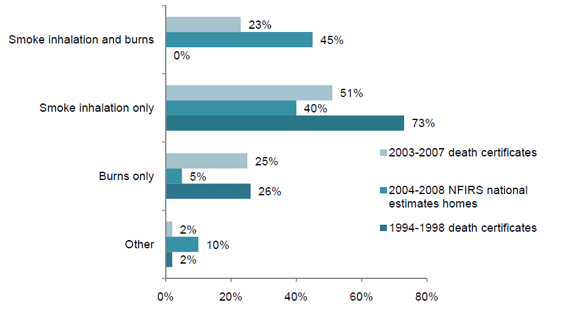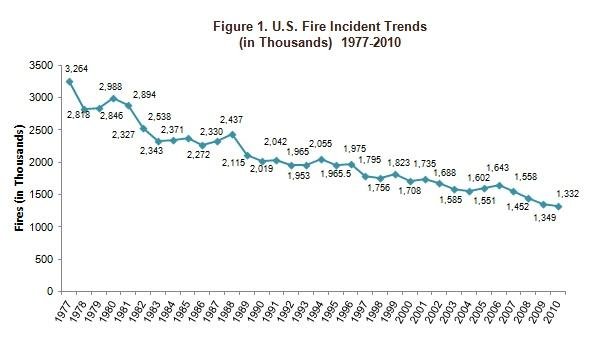Introduction
Fire brigade or fires and rescue services entangle private and public organisations that give fire-fighting services coupled with rescue services from dangers associated with fire. These organisations provide services within a particular jurisdiction area such as county or municipality.
These areas of jurisdiction are termed as districts of fire protection. Every fire brigade has within its jurisdiction a number of firefighting stations equipped with fire-fighting equipments, volunteer firefighters, and or career firefighters.
Other services that are provided by the fire brigade are protection from dangers of fire or inferno prevention services. While administering these services, firefighters visit various homes to offer advice on fire safety precautions, install fire, smoke detection devices, and alarms.
In America, amid consideration of fire brigade services as being critical in helping put fire out in the attempt to save property, they are also perceived to be essential in helping save lives of the American population. From this perspective, the purpose of this paper is to present a report on the fire statistics in the U.S besides presenting the roles of fire brigades in the U.S in managing risky situations involving inferno dangers.
Fire statistics
There are two main situations involving fire that may cause death. These are smoke inhalation and burns produced by fire. In the U.S, according to National fire protection association (2012) “death certificates show a 2-to-1 ratio of smoke inhalation to burns for fire deaths overall, while fire incident reports show an 8-to-1 ratio for home fire deaths” (Para.1).
In total, burns combined with smoke inhalation account for a quarter of all deaths produced by fires. In particular, with regard to National fire protection association (2012), in 1999, “smoke inhalation fire deaths outnumbered burn deaths in fires by roughly 3-to-1 in death certificates” (Para.1).
The gap between these two has continued to expand with time. Even though these statistics indicate that smoke inhalation and burns are critical causes of deaths recorded on death certificates in the U.S., it is paramount to report that coding approaches deployed in the deaths certificate in the years preceding 1999 only accommodated one lethal condition.
This implies that, where a case of death emanating from a combination of smoke inhalation and burns was encountered, it could only be coded as one caused either purely by smoke inhalation or purely by burns.
However, after changing the coding approaches, National fire protection association (2012) reports, “It was now possible to categorise deaths as involving both burns and smoke inhalation, smoke inhalation but not burns, burns but not smoke inhalation, one or more conditions but not smoke inhalation and not burns” (Para.3). The statistics for fire-associated deaths during 1994 to 2007 are shown graphically below in figure 1.

From figure 1, it is clear that, between 1994 and 2007, smoke inhalation and burns have been key contributors to fire associated deaths. Fires brigades have and are still endeavouring to reduce these causes of death through rapid responses should incidences of fire are reported within their areas of jurisdiction.
Fatal fire incidences can be divided into three groups: vehicle fires, structure fires, and outside fires or other fires. In this end, vehicle and structure fires stand as the single most dangerous courses of deaths in the U.S.
Precisely, according to Michael and Karter (2011), the “U.S. fire departments responded to an estimated 1,331,500 fires resulting to 3,120 civilian fire fatalities, 17,720 civilian fire injuries, and an estimated $11,593,000,000 in direct property loss” (p. i).
Of all these losses, structure fires accounted for 36 percent of the total deaths whereas vehicle fires took a critical share of 16 percent while other fires took the lion’s share of 48 percent. Nevertheless, since 1977, the fire brigades in the U.S have played incredible roles in ensuring that the general trend of fire-associated deaths reduces. This trend is shown in figure 2 below.
From the line graph, it can be seen that although the trend in reduction of the fire deaths never follows an exponential decay curve to imply that, at some time in the future, almost zero fire-associated deaths would be recorded. The rate of reduction is substantive.
This reduction may be associated with the improvement of medical aid and better medical care for bodily injuries associated with fires since 1977 when the first data was available.
Nevertheless, it could be impossible to avail the victims of fire to the healthcare facilities for the medical attention services to be offered if the fire brigades did not respond both speedy and with efficiency. The factors that may contribute to this improved efficiency are the concern of the next section of this report.

Source: Evarts
Factors contributing to development of the capacity of fire brigades to respond to fires rapidly
The firefighting task has undergone substantial positive development, which may be argued as being the chief contributor to the continuous reduction of deaths associated with fires’ smoke and burns since 1977.
These developments are evidenced by both the deployment of new approaches in management of the fire brigades by organisations and the deployment of new technological interventions in fire detection and control by the brigades. The detection and control gadgets include infrared detectors and structure-installed fire extinguishers. Infrared detectors are installed in buildings to detect smoke.
Once excited, the detector switches on a fire alert alarm, which promotes either automatic operation of the in-house fire extinguishers or raises the attention of the structures’ occupants to move strategically to locations of the extinguishers in the attempt to enhance preparedness to control the fire.
Other contributors of enhanced fire control are the deployment of technology to enhance fire control logistics. In addition, it is important to report that, in the new measures to deal with deaths associated with fires, the task of fire control is principally not left to the career personnel specialising in this discipline.
Rather, community is involved in the process. The concept of retained firefighting is one of the best examples of the new approaches in enhancing both fire dangers preparedness and control should fires occur.
In this context, Fire and Rescue NSW (2011) reckons, “becoming a retained firefighter for Fire and Rescue NSW will give you the chance to make a real and worthwhile contribution to the community in which you live” (Para. 1). This implies that people who become retained firefighters are accorded a chance to interact besides offering an aid to various people.
The fact that, in the retained firefighting, people are not left out on the accounts of being employed elsewhere implies that the concept is central to the concerns of incorporation of the entire community in managing and helping to control fires.
This argument is amplified by the fact that, when one enrolls as retained firefighter, he or she has the flexibility of time since he or she may either work on ‘on call’, fulltime, or even on part time basis. Arguably, therefore, the main concern of encouraging people to join fire brigades as retained firefighters rests on the idea of ensuring that numerous people in the community acquire firefighting and prevention skills.
This assumption holds weight especially upon considering that retained firefighters are charged with a number of things. These include “extinguishing fires, engaging in community education, fire prevention activities and taking effective action at rescue and hazardous material incidents and assisting other emergency services as required” (Fire and Rescue NSW 2011, Para. 2).
Central to prevention of fire strategies rests the fires and safety standards. According to Fire Safety Advice Centre (2012), these include “codes of practice, and other guidance to support fire legislation standards, which offer information about the main fire safety legislation and documents, as well as hopefully helpful general fire safety advice” (Para.2).
Creating massive awareness of these safety legislations can reduce the incidences of fire-associated deaths in an amicable way. This can be enlaced through encouragement of people to join retention firefighting on voluntary basis.
Conclusion and recommendations
This paper reports an immense success in the reduction of fire-associated deaths since 1977 when the first data on such deaths was available. This has been done through consideration of both statistics and trends in the number of deaths related to fire as recorded in death certificates as either smoke inhalation or burns.
Adoption of technology and new concepts of fire prevention and control such as retention firefighting is recommended by the report as a subtle way of continuing the trend of reduction in the number of deaths associated with fires.
References
Evarts B. 2011, Trends and patterns of U.S fire losses. Web.
Fire and Rescue NSW 2011, Retained firefighters. Web.
Fire Safety Advice Centre 2012, The Fire Safety Advice Centre. Web.
Michael, J. & Karter, J. 2011, Fire losses in the United States during 2010. Web.
National Fire protection association 2012, fatal effects of fire. Web.